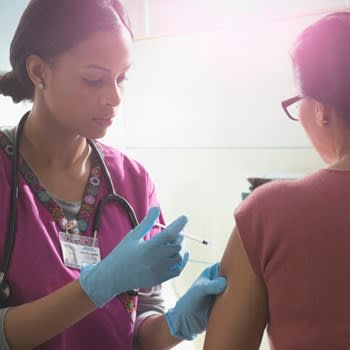1 in 5 U.S. Women Not Following Mammogram Recommendations
Analysis of the latest CDC data found more than 21% of U.S. women aged 50 to 74 – who are at higher risk for breast cancer – are not receiving mammograms at the recommended intervals.

- More than one out of five women nationwide are not receiving mammograms at the recommended intervals.
- More than one out of thre women in Wyoming are not receiving mammograms at the recommended times.
- At least a quarter of women in 13 states are not adhering to expert recommendations concerning mammograms.
The United States Preventive Services Task Force (USPSTF), which is made up of doctors and disease experts and to whom the Centers for Disease Control and Prevention (CDC) defers, recommends mammograms every two years for women aged 50 to 74.
The American Cancer Society has even stricter guidelines and recommends women aged 45 to 54 get mammograms every year. Upon turning 55, they may reduce mammograms to every other year.
But more than one out of five U.S. women at the age considered to be most at risk are not undergoing the preventive procedure within the recommended intervals.
Our analysis of data from the Centers for Disease Control and Prevention (CDC) found that 21.7% of women aged 50 to 74 had not had a mammogram within two years (as of 2020, the most recent data available).
To highlight the state populations most at risk due to a lack of early detection, our research team uncovered the percentage of women aged 50 to 74 in each state who reported not having undergone a mammogram within the previous two years.
The chart below shows the percentage of all women aged 50 to 74 in each state who reported not having a mammogram within the recommended two-year timeframe.
Click on image to enlarge in a new tab
Nationwide, 21.7% of women aged 50 to 74 had gone at least two years without a mammogram as of 2020. In 24 states across the U.S., the percentage of women not receiving a mammogram during that two-year timeframe is even higher than the national average.
More than one out of three women in Wyoming aged 50 to 74 did not have a mammogram within two years, which was the highest rate in the country. The same was true for over a quarter of women in that age cohort in:
- Alaska
- Utah
- Idaho
- Oklahoma
- Colorado
- Kansas
- Montana
- Mississippi
- Indiana
- Arkansas
- Vermont
- New Mexico
Women aged 50 to 74 in Massachusetts (13.3%), Rhode Island (15.2%) and Hawaii (17.1%) seemed to be more diligent about having mammograms within a two-year period, based on their low rates reported in this study.
Mammogram rates in certain metro areas can be far different than their respective statewide average. For instance, 20.8% of women in Florida aged 50 to 74 did not receive a mammogram within two years. But in the Tampa/St. Petersburg/Clearwater area, 27.7% of women that age did not receive a mammogram.
In North Carolina, 19.7% of women aged 50 to 74 did not receive a mammogram within two years. But in the capital city of Raleigh, just 9.4% did not.
Disparities also exist between cities in the same state. For example, 24.4% of women aged 50 to 74 in Boise, ID, did not receive a mammogram in two years. On the other side of the state in Idaho Falls, 37.6% did not.
Just 11.2% of women aged 50 to 74 in New Orleans, LA, did not receive a mammogram within two years. But just over 130 miles to the west in Lafayette, 24.3% did not.
The chart below shows the Metropolitan Statistical Areas (MSAs) with the highest rates of women aged 50 to 74 who reported not having a mammogram within the recommended two-year timeframe.
Click on image to enlarge in a new tab
Mammograms have been shown to reduce the risk of death from breast cancer in women aged 40 to 74 years old. And most women do not have to pay anything for a mammogram.
- The Affordable Care Act (ACA) requires all new health insurance plans to provide fully covered mammograms every two years for women over 50 with no copayments or coinsurance, regardless of whether or not a deductible has been met.
- Medicare covers annual mammograms in full for women over 40. Medicare advisors and licensed insurance agents can help explain more details about Medicare mammogram coverage and help you compare types of Medicare plan options.
- All state Medicaid programs are required to cover mammograms in full.
The data used for this report came from 2020 Behavioral Risk Factor Surveillance System (BRFSS) data provided by the Center for Disease Control and Prevention (CDC)'s National Center for Chronic Disease Prevention and Health Promotion (NCCD) Division of Population Health, the most recent data available.




